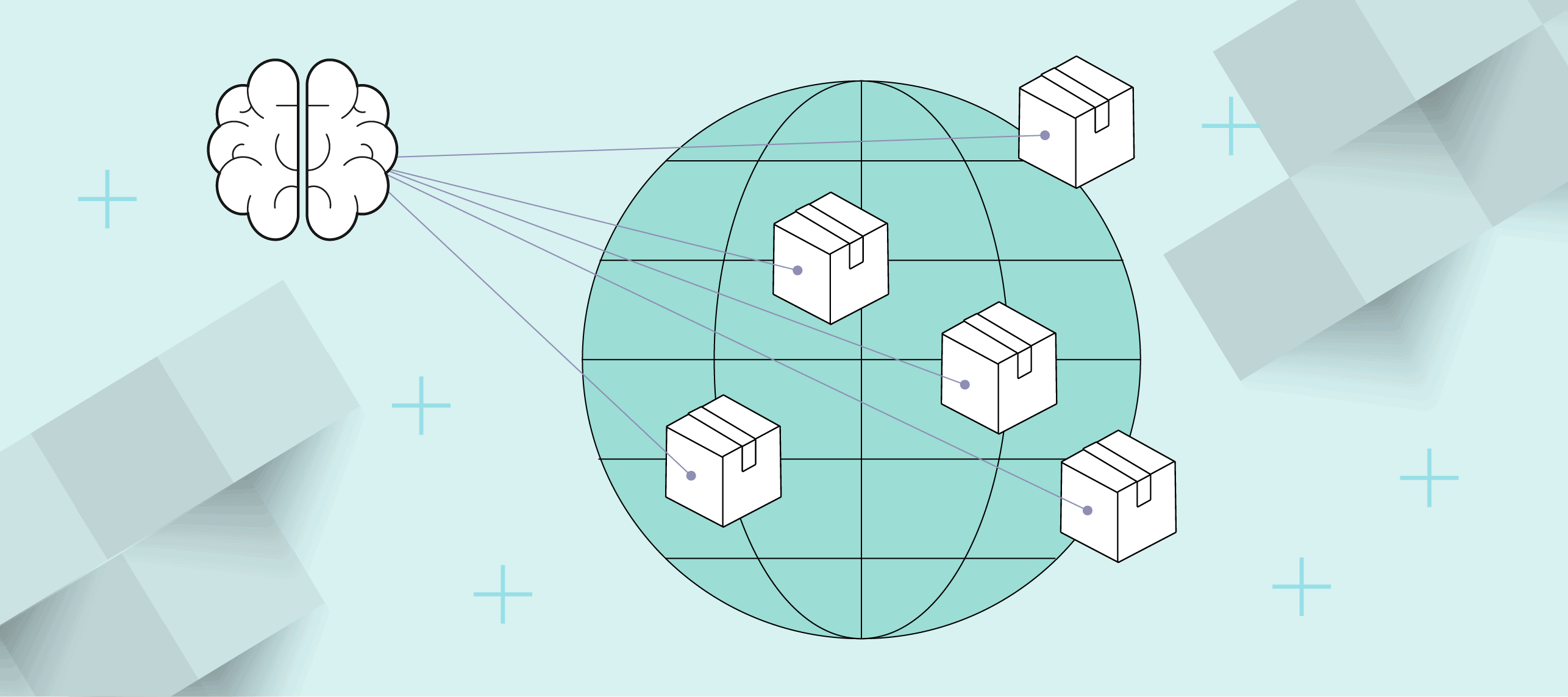10 minute read
How do you develop products for the international market while avoiding as many potential pitfalls as possible? Product expert Adi Kabazo provides actionable steps and insights gained from two decades of experience.
Developing products for the international market adoption can be among the most rewarding achievements. But while commercializing, marketing and supporting technology products in multiple regions can be a dream come true, it can also be an extremely daunting challenge.
A growth strategy that includes eventual international expansion requires planning. Every industry has examples of companies that, when finally pursuing new global markets, were constrained by strategic shortcomings, product design limitations or insufficient resources.
The challenges that come with developing products for international markets can significantly impact the time to market, inflate product development costs and diminish a product’s perceived value. And anything that hinders your ability to access new markets in a timely fashion will evolve into increased competitive risk, especially if your competitors planned better.
So how do you successfully develop products for international markets? Here are some considerations that can help lay the foundation for your product to find success on the international scene, even if the plan for international expansion is not yet on your product roadmap.
How to Develop Products for International Audiences
The structural differences and cultural nuances of various target markets can easily become the Achilles’ heel of even the most promising products. “Think global, act local” was originally coined as a phrase for environmental stewardship—but it can also be used to represent the need for local adaptations when taking products to the global market.
Japanese economists created the less known but more apt term, “glocalization,” which entails the need to adapt to the particularities of local markets. But no matter how you refer to it, there are some key things to consider when it comes to these differences.
Distribution and support. The first contextual consideration is the structure of the target market’s distribution and support channels and the value they are expected to add. While developing sales channels may not be your responsibility, differences in the partner ecosystem (OEMs, value-add resellers, system integrators, distributors, support providers, etc…) can impact the ability to customize the product, integrate it with other offerings, change packaging, or implement different pricing. Understanding these variations is crucial for adapting the product effectively.
Cultural differences
Each market around the world introduces a set of nuances that can apply to nearly everything, including product design, packaging, perception of value, pace of adoption and the actual use of the product. These local interpretations can range from product-quality perception issues to differences in the process for adopting new solutions. For example, a Taiwanese early adopter client may be eager to test a prerelease version, but a partner in Japan may find software defects in a beta version quite insulting. And the decision-making process can differ greatly between a German medium-sized business and one in the United States.
Understanding Cultural Differences
Having participated in the take-to-market efforts of new software products in various parts of the globe, I have experienced both the success of a product that fit the purchasing flexibility of small manufacturing clients in Germany and the extraneous efforts required to save face after a “buggy” service pack was sent to a reseller in Japan. Without an advanced degree in social anthropology or direct exposure to target markets, how can the product professionals tasked with crafting requirements gain insight into those issues?
One approach is to tap into the diversity in your own workforce or social circles. Products and services that are geared for the global market would naturally benefit from others who have gained international experience or been exposed to other cultures. So, if it seems premature for you to gauge the voice of the customer from a market you have yet to serve, why not grab a coffee with the team member who just joined your company after living in France for 3 years?
Another option to get such valuable cultural insight on the path to world domination can be through partners, new or existing. Since a scalable international expansion requires the cultivation and support of channel partners anyway, why not gain valuable regional input from them early in a product’s lifecycle? These partners have a vested interest in your success.
Watching your language
Localization is often top of mind when thinking of international markets but is not always a low-hanging fruit. Whether your product is hardware, software or a combination of the two, the labeling and user-interface elements, both inputs and outputs, are directly affected. It is a good idea to decouple language from the product design, which will extend your flexibility to add new languages and modify the presentation as needed.
Many of you may have come across products that require extensive development and quality-assurance efforts to adapt them to languages such as Chinese, Japanese or Korean. Only two decades ago, the norm for many technology companies was to focus on the United States as a primary growth market and add Asia later. I worked quite closely with a dedicated team of Japanese software engineers who painstakingly adapted and tested our product for close to a year before it was ready for that market. Nowadays, with major growth markets in Asia, software products designed for internationalization are typically developed to incorporate Asian languages from the start through double-byte support.
Supporting Bidirectional Text
Supporting bidirectional text in languages such as Arabic, Farsi and Hebrew, which are written right to left (RTL), is not a trivial undertaking either. And the potential rewards from these markets cannot always justify the engineering investment required. Such cases may benefit from early exploration of that market to find a partner or marquee customer who is willing to fund these hard-to-justify development efforts.
A third example of why language should be planned for is the amount of characters that words or phrases in a language require, or rather, the “real-estate” needs of that language. If you haven’t been exposed to this issue before, consider extra room in your user-interface design for French and German text. And for software, allow for sufficiently long strings and database tables.
Be Mindful of How Language Translates
While English is still the most common business language, one cannot assume that English words are accepted as standard by even the most technical or forward-thinking audiences. It’s also important to recognize that the meaning of words can change significantly when translated. This can create barriers or even PR incidents when introducing a product into a new international market.
There are numerous examples of companies that named or marketed products in ways that didn’t translate well. For example, in Belgium, “every car has a high-quality body” from Ford translated to “every car has a high-quality corpse.” One quick and cost-effective means to vet your product design and avoid branding gaffes early on is to tap into the diversity of cultural and language skills within your organization. Ask members of your team how your product would or should appear in their native languages. While imperfect, it should be sufficient to buy you some time until your product is ready for your chosen localization service provider or regional partners to translate.
The following may be one of the better kept and often ignored secrets in the technology product domain. Whether your organization creates technical product documentation (e.g., user manuals) parallel to product design or waits until the product is near completion, you will benefit greatly from the expertise of technical writers, even on a contract basis, who are proficient in authoring content in a concise and structured manner. This not only provides artifacts that are easier to translate but can also potentially save money as localization vendors charge by the word.
The following tips can help improve the experience of using technical writers:
- Use technical writing professionals with experience authoring in advanced tools that could support the use of translation memory systems (e. leveraging XML standards). This could significantly increase speed to market and reduce costs when you pursue new languages or need to revise existing documentation.
- Look for writers that are experienced writing with Simplified English, which is a limited and standardized streamlined writing form designed to make technical documents easier to understand.
Pricing for profit
It’s sometimes said that product pricing is part science and part art. This is even more nebulous in an international context where the stated price or packaging of a product might differ regionally due to structural and cultural nuances or currency fluctuations. One strategy to deal with this is to create a local edition of the product tailored to and optimized for that market. This edition should also be priced differently to suit the specific market conditions. This will allow you or your resellers to charge a premium in markets where the effort to adjust the product needs to be recouped. It is also beneficial in markets where the perception of value is highly correlated with price.
Standards, regulations and hidden barriers
Depending on the type of product and its applications, entering a new international market often requires adhering to a new and potentially unanticipated layer of standards and regulations. It’s important to investigate the target market with this in mind to locate any hidden roadblocks that can create issues later.
There are a myriad of standards and regulations that cover just about every conceivable area of a product could touch, including but not limited to:
- Required interfaces with other systems: This includes compatibility, inputs, outputs
- User interface and interaction requirements: This includes expected and popular operating systems, browsers and smartphones to support or comply with disability requirements
- Documentation guidelines: This includes availability in multiple official languages or dialects, safety instructions
- Material content due to environmental or human rights reasons: This includes the restriction of hazardous substances and conflict minerals
- Security and handling of data: This includes encryption, privacy and transaction logging
You should also consider security, privacy, or trade issues arising from product support or manufacturing in certain regions. This is especially critical for products serving government, health, and financial industries, which are sensitive to such issues (e.g., European and Canadian clients are particularly concerned about the U.S. Patriot Act and related surveillance).
Technology originating or supported from certain countries also may be deemed untrustworthy or subject to scrutiny. So, while you may find it compelling to develop software or provide technical support from certain regions, some customers may consider these a deal breaker. For example, the U.S. and Australian governments have banned Chinese-made computer technologies from being selected by government agencies. The manufacturing of goods in regions may also have questionable labor standards, so it’s important to investigate all angles before making commitments.
On way to find local information is to build relationships. Having channel partners in the market you are interested in can be a valuable source for such insights. Another tactic is to review competing products and their product literature. This can reveal what they have implemented and addressed, though this doesn’t guarantee a complete picture.
Plan for Flexibility
For some product categories, such as packaged enterprise software, customers expect the ability to tailor the product or service to their needs without jeopardizing quality or future compatibility. Such flexibility is usually represented as a fundamental set of requirements. The same approach would be valuable when developing u product to the international market, allowing adaptation to a particular market without needing a separate assembly line. In software, this means avoiding the “forking” of your code base.
This would include provisions in the product design for labeling, support for regional settings like units of measurement and date formats, or the adjustment of a software system’s user interface. Other areas of flexibility could include product branding and allowing for white-label rebranding. This enables integration into other products and services fronted by your channel or Original Equipment Manufacturer (OEM) partners in the region.
The more flexibility built into a product, the more opportunities international partners have to tailor it for their market. This can involve creating interfaces, prefabricating configurations (e.g., templates and kits), or developing documentation and training materials. Such forward thinking benefits speed to market, business scalability, and offers partners chances to create sustainable value add, keeping them engaged and committed. The strategic value of this flexibility is substantial.
Finding Your Way into International Markets
There is no error-free GPS for introducing a product to the international market. Hopefully this article, based on around two decades of experience in developing, delivering and supporting technology products around the world, has shed light on navigating an efficient path for your product to go places. Bon voyage!
Author
-

Adi Kabazo, a professional with 30 years of expertise in market research and product marketing, has made significant contributions to companies like Teva Pharmaceuticals, Incognito Software, and Telus. His diverse experience spans industries, showcasing his adaptability and strategic prowess. For questions or inquiries, please contact [email protected].
View all posts








